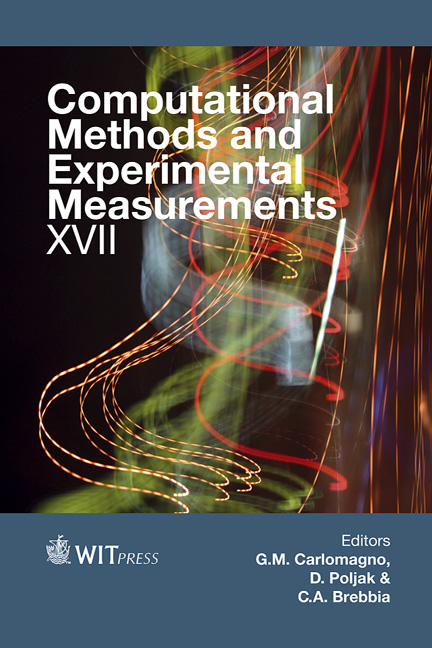Complementary Studies On Supersonic Nozzle Flow: Heterodyne Interferometry, High-speed Video Shadowgraphy, And Numerical Simulation
Price
Free (open access)
Transaction
Volume
59
Pages
12
Page Range
223 - 234
Published
2015
Size
1,333 kb
Paper DOI
10.2495/CMEM150201
Copyright
WIT Press
Author(s)
C. D. Fredrick, T. R. Greenlee, R. W. Peterson, A. J. Schaffer, K. R. Stein, A. W. Woetzel
Abstract
Experiments and numerical simulations are carried out in the upper-level, undergraduate physics laboratory to examine the highly transient startup flow from a small nozzle. The flow is initiated by the rupture of a Mylar® diaphragm positioned between the nozzle and a pressurized air tank. The studies utilize an approach based on experimental measurements and computational methods. Experimental studies consist of dual-beam heterodyne interferometry and high-speed video (HSV) shadowgraphy. Interferometric measurements at 25 million samples per second relate optical path length changes across the nozzle flow to density variations in the flow. HSV shadowgraphy portrays the initial shock wave and compressible flow features surrounding the nozzle exit at 100,000 frames per second. Finite element computations of the unsteady, axisymmetric, compressible nozzle flow provide a field description of the flow for the full tank-nozzle-exterior domain. The studies show excellent matching between the experimental and computational methods. More importantly, the distinct strengths of the different approaches work together to provide a more comprehensive description of the nozzle flow than can achieved by the individual approaches.
Keywords
shadowgraph imaging, heterodyne interferometry, high-speed video, computational fluid dynamics, advanced undergraduate laboratory





